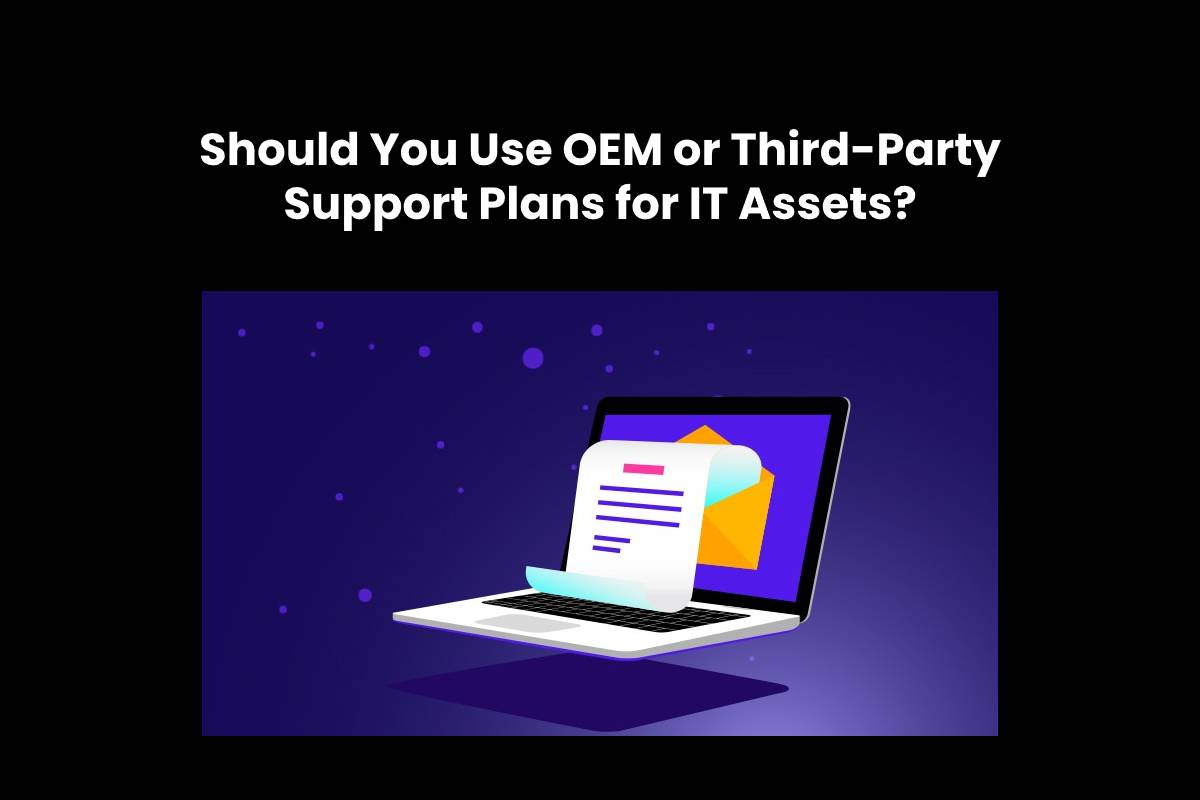Table of Contents
Introduction
Purchasing support plans for your devices is a great way to keep them operational and maximize their functional lifespan. But should you rely on OEM or third-party support plans?
In this article, we’ll explore the pros and cons of each and detail the variables that should help you make your final decision.
OEM vs. Third-Party Support Plans
The original equipment manufacturers (OEMs) of your IT assets likely offer robust maintenance plans for their own products, and possibly some of the products of their competitors. Major tech companies like IBM, HPE, and Oracle are well known for this. You can purchase a maintenance contract through them when you buy the equipment or in the future when you find that you have maintenance and support needs.
By contrast, you can also invest in third-party support plans, which are offered by a wide range of different technology companies dedicated to providing maintenance and support for a wide range of different products.
Which one is better? Should you consolidate your maintenance providers by using multi-vendor IT services for support? There’s not a straightforward answer, because there are pros and cons to each choice.
Advantages of OEM Support
Let’s take a look at some of the advantages of OEM support plans:
- Direct contact. OEM software support allows you to reach out directly to the manufacturer of the products you’re using. If you’re relying on a device that was created by IBM, having a direct conversation with an IBM representative may be able to help you find a solution faster. Though third-party maintenance providers are typically familiar with the ins and outs of products like these, it can be comforting to know that you’re working with the original manufacturer.
- Accountability and reputation. Original manufacturers have to think about their reputation. If you own a piece of equipment that’s constantly breaking down, or if you’re not satisfied with your maintenance experience, it’s going to reflect poorly on their brand. Manufacturers realize this, so they’re incentivized to provide you with the best service they possibly can.
- Lower costs (initially). Depending on the nature of your arrangement, you may be able to score a better deal on an original manufacturer support plan. If you’re buying the equipment directly from the source, you could get a maintenance plan bundled with your equipment or enjoy a significant discount on the cost of services for the first year (and possibly beyond).
- Guaranteed support. Many original manufacturers are willing to provide maintenance and support for equipment that doesn’t belong to them, but this isn’t a guarantee. If you have IT assets from a range of different manufacturers, you may have to piece together different maintenance and support contracts to get coverage for all of them.
Advantages of Third-Party Support
Now let’s take a look at some of the advantages of third-party support plans:
- Flexibility and options. You have much more flexibility and more options with most third-party plans. You’ll be able to purchase plans that cover a wide range of different types of equipment from different manufacturers. You’ll also have a wider range of service packages to choose from, allowing you to select the perfect plan for your business’s needs.
- Different incentive structures. Original manufacturers and third parties have different incentive structures. Third-party maintenance and support providers have one clear objective: serving the customer. A third-party organization is going to be much more invested in your success, and much more willing to do whatever it takes to make you satisfied with the arrangement.
- Extended coverage. You can often get more extended coverage with a third party. You can get more types of service and have them provided for a longer period of time this way.
- Lower costs (overall). For many IT departments, cost is the bottom line. So it makes sense that an original manufacturer support plan looks attractive on paper. However, third-party maintenance plans tend to be much less expensive than original manufacturer plans, especially over time. In some cases, you’ll be able to spend 30 to 40 percent less on your maintenance contracts.
How to Choose
If you’re having trouble choosing, consider the following:
- Cost comparisons. What are the short-term and long-term costs of each option?
- Company reputations. Pay attention to the reputations of the companies you’re considering working with.
- Previous experiences. Have you had any experiences with this manufacturer or this third party in the past?
- Coverage and services. What services are included , and how much coverage do you have?
- Contracts. How long is the contract term and are there any restrictions?
For some companies, OEM support plans are superior. For others, third-party support plans are much more robust and cost-effective. Consider the variables carefully and make the decision that makes the most sense for your business.



